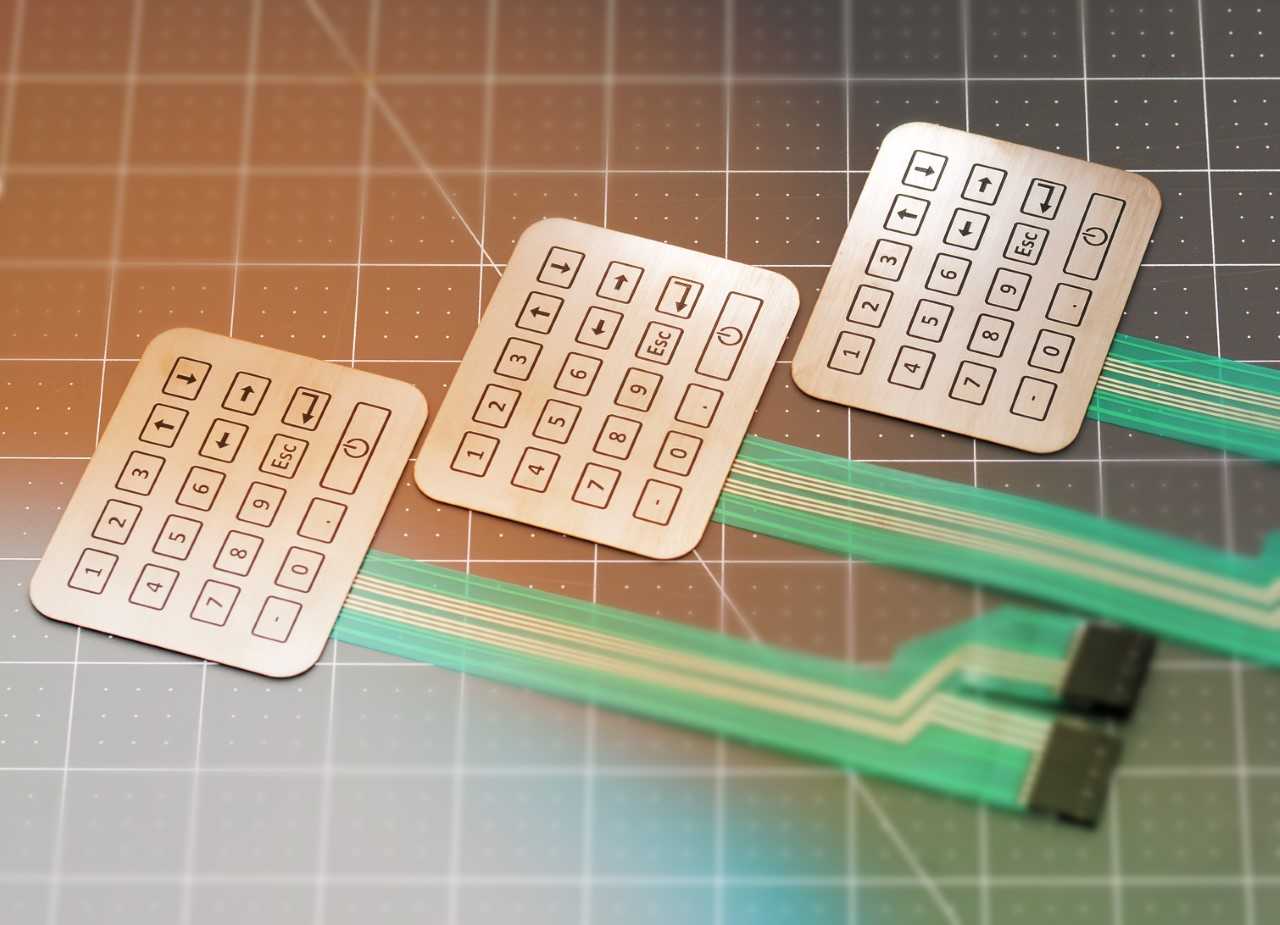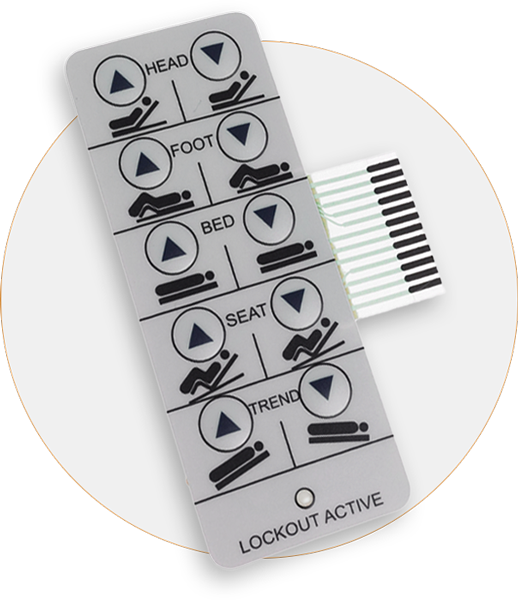Working with a qualified membrane switch manufacturer ensures adherence with industry standards.
Working with a qualified membrane switch manufacturer ensures adherence with industry standards.
Blog Article
Everything About Membrane Switch Over: Understanding Its Style and Functionality
When you consider the control user interfaces in modern devices, membrane switches often enter your mind. These components are greater than simply switches; they mix layout and functionality perfectly. Recognizing exactly how they function and what makes them reliable can transform your perspective on day-to-day electronic devices. There are subtleties to their design and performance that you may not be aware of. Let's explore what collections membrane changes apart from other control systems.
What Are Membrane Switches?

Their seamless nature makes them simple to tidy and resistant to dust and moisture, a crucial attribute in several settings. Membrane layer buttons can additionally be personalized relating to shape, size, and graphics, permitting manufacturers to produce special user interfaces tailored to details items. Plus, they're light-weight and thin, which assists in minimizing the overall mass of gadgets. In general, membrane layer buttons play a considerable function in boosting individual experience throughout a broad selection of applications.
Just How Membrane Switches Work
When you press a key on a membrane button, it activates an uncomplicated yet reliable mechanism. membrane switch manufacturer. The leading layer, typically made of versatile product, pushes down onto a conductive layer below it.
You'll discover that the responsive feedback differs based upon the button layout, using either a soft click or an extra pronounced feedback. As soon as you release the secret, the membrane layer go back to its original setting, resuming the circuit and quiting the signal. This process occurs nearly instantaneously, making certain a receptive individual experience.
Membrane buttons are preferred as a result of their sturdiness and resistance to dust and dampness, making them ideal for numerous applications, from family home appliances to clinical devices. Recognizing this operation assists you value their widespread usage.
Key Parts of Membrane Layer Switches
Understanding the essential components of membrane buttons is fundamental for understanding their functionality and layout. At the core, you'll discover the visuals overlay, which supplies the visual user interface for individuals. Below that, there's a spacer layer that separates the circuit layers, making sure that they do not make call until pressed. The circuit layer is where the magic happens; it contains conductive traces that complete the circuit when you press the button. An additional necessary element is the sticky backing, enabling the button to abide by surface areas securely. Lastly, the safety layer shields versus ecological aspects and put on, prolonging the switch's life-span. Each part plays a considerable duty in making sure trustworthy performance and individual interaction. By understanding these components, you'll gain insight right into how membrane layer switches over run and their relevance in different applications.
Products Utilized in Membrane Switch Over Layout
The efficiency and durability of membrane layer changes heavily depend on the materials made use of in their layout. You generally experience polyester and polycarbonate as key substratums as a result of their outstanding strength and versatility. These materials resist scratches and chemicals, making them ideal for demanding settings.
The conductive layers commonly make use of silver or carbon, selected for their dependability and conductivity. membrane switch manufacturer. Silver offers remarkable efficiency, while carbon is an affordable choice. For the overlay, you might take into consideration a matte or shiny finish, depending upon your visual requirements and user experience
Adhesives play a vital role too; they bond layers firmly and assure long life. Make sure to choose adhesives that stand up to environmental aspects like temperature and humidity. Finally, don't ignore the importance of a good printing method for graphics, as it enhances both capability and visual charm. Picking the ideal materials will certainly ensure your membrane layer button stands the examination of time.
Design Factors To Consider for Membrane Layer Buttons
While designing membrane layer switches, it's essential to consider numerous elements that affect their functionality and individual experience. Start by focusing on the format and button dimension; ensure they're intuitive and simple to navigate. Think about the tactile responses you intend to offer-- will individuals need a recognizable click or a softer touch? Additionally, think of the materials you'll utilize, as they'll affect longevity and aesthetic appeals.
Confirm your style suits environmental variables, like wetness or temperature variants, which could influence performance. By meticulously thinking about these elements, you'll produce a membrane switch that improves usability and contentment.
Applications of Membrane Layer Switches
Membrane layer switches are functional parts located in numerous applications, from commercial equipment to customer electronic devices. You'll see their impact in equipments that need long lasting interfaces and in devices that take advantage of smooth styles. Comprehending these applications assists you value the capability and usefulness of membrane layer switches in everyday modern technology.
Industrial Equipment Usage
When you're looking to improve the performance of industrial equipment, membrane switches offer a trustworthy solution that incorporates toughness with straightforward design. These switches are ideal for harsh environments, providing resistance to dirt, wetness, and chemicals. Welcome membrane layer buttons to simplify your operations and enhance overall efficiency.
Consumer Electronic Devices Assimilation
In the domain of customer electronic devices, membrane switches play a necessary role in improving individual communication and device functionality. You'll find them in devices like microwaves, remote controls, and video gaming consoles, providing a seamless method to interact with modern technology. Their sleek design enables easy integration right into different items, making controls instinctive and user-friendly. With their capability to include graphics link and backlighting, you can delight in a modern-day visual that matches the gadget's overall appearance. Membrane buttons also guarantee durability and resistance to dust and moisture, expanding the life-span of your electronic devices. By choosing membrane layer buttons, you improve not just the performance yet also the style of your tools, making daily interactions smooth right here and delightful.
Benefits and Negative Aspects of Membrane Layer Buttons
While membrane switches offer an array of advantages, they likewise come with some drawbacks that you need to take into consideration. One substantial benefit is their small layout, making them ideal for space-constrained applications.

Nonetheless, there are disadvantages. Membrane layer switches can have a shorter life-span compared to mechanical buttons, particularly under heavy usage. They can likewise be much less tactile, which may affect customer comments throughout procedure. If harmed, fixing them can be tough and often needs complete replacement. Inevitably, their level of sensitivity to severe temperature levels and environmental problems might limit their performance in specific settings. Stabilizing these benefits and drawbacks will certainly help you identify if membrane layer switches are the ideal fit for your project.
Often Asked Inquiries
The Length Of Time Do Membrane Changes Typically Last?
Membrane layer switches over generally last in between 5 to one decade, relying on usage and environmental conditions. You'll want to evaluate elements like wear, exposure to dampness, and temperature changes to assess their longevity effectively.
Can Membrane Changes Be Custom-made for Details Styles?
Yes, you can customize membrane layer buttons to fit specific styles (membrane switch manufacturer). You'll have the liberty to pick colors, shapes, and designs that match your task's demands, guaranteeing they blend flawlessly with your overall aesthetic
What Is the Cost Array for Membrane Change Manufacturing?
The expense array for membrane switch production usually falls in between $1 and $10 each, depending upon variables like design complexity, amount, and products. You can get More Info quotes from makers to discover the most effective option.

Are Membrane Layer Switches Waterproof or Resistant?
Membrane switches can be made to be water resistant or resistant, depending on materials made use of and building and construction approaches. If you require them for damp settings, ensure you specify those needs throughout the style procedure.
How Do Membrane Switches Over Contrast to Typical Switches?
Membrane layer switches are usually thinner and more flexible than typical buttons, supplying a streamlined design. They're often much easier to clean up and incorporate, however could not provide the responsive comments you're used to with mechanical alternatives.
Conclusion

Report this page